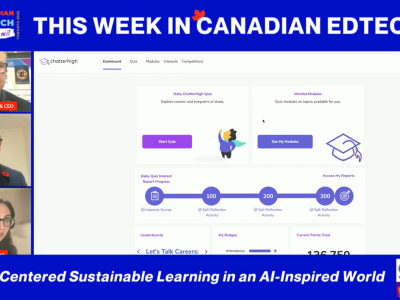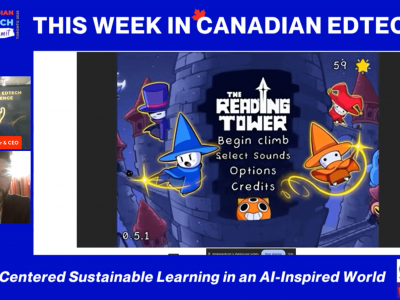You’ve read the literature, you’ve been to the right conferences and heard the right speakers and you have in your change arsenal the right philosophy and the right spirit to make a difference at your school. The change seems elusive however and you’re frustrated by the seemingly small steps your school has taken with regards to teaching and learning with technology. What can you do next? Listed below you’ll find five things that you can do to ensure that you use technology as a powerful enhancer of teaching and learning at your school. This is not exhaustive. From these general points you should do further reading and research so that you can ensure that you’re properly prepared to utilize these general points of guidance. Further, the key ideas below assume strong, strategic leadership from teacher-leaders and administrators who are life-long learners. No room for the weary or faint of heart if you want to transform your school!
Develop a Long Range Plan (3-5 years)
Plans in and of themselves are not useful unless you follow them and refer back to them constantly. And these plans should be ‘living’ plans that are developed by all key stakeholders. This means that you may need to tweak your plans in order to meet your needs as time changes and contexts evolve. Teachers should feel free to speak about what works and what doesn’t so that your long term plans are meeting immediate needs and are realistic.
Your plan should encompass the SMART philosophy (Specific, Measureable, Attainable, Realistic, Timely). This plan should be something that is built on previous years plans. By this I mean that we should live out our plans in a way where we’re always keeping an eye to the future. Where have we been? What have we learned? Where do we need to go in the future? These thoughts and questions should be ever present as we move through the cycle of planning and we must ensure that these plans are kept in the ‘limelight’ so to speak. Constantly referring to and thinking about our plans will help us to make our plans come to fruition.
Use the ideas below to help you create your plan. Use your district resources and people to help you develop your plan. This could also include your parent community. How are they impacted by what you’re doing? How could they support your plan? Who could help you ‘think outside the box’ and cover your blind spots?
Build Relationships and Create a Team that Collaborates
If you’re not involved in building a team of teachers that trusts one another and is engaged in the process of change where each member of that team feels that his or her opinions are valid and those thoughts are validated via healthy professional discussion then you should start now. If teachers are the difference makers we believe them to be then we must start with them; we must ensure that our team is practicing the very things we expect our students to learn about collaboration. Co-labouring happens when your team is deeply engaged in a transformative process that is personally and professionally rewarding. Of course, every school is different. Some schools are already well on their way to building deeply collaborative relationships among staff members. Colleagues can easily co-teach and look forward to the PLCs that have been created because they know that without this kind of collegial support transformation will not happen.
On the other hand there are schools where teachers are siloed in their own philosophies and are never challenged. The corollary is neither are their students. If you exist in this kind of context as a lead teacher or as an administrator there is no simple way forward. There are no doubt however at least several teachers who you can work with to start that team building and then the dysfunctional team that exists as a whole will over time begin to dissipate. There’s no sense talking about using technology effectively in teaching and learning at your school unless you have a team that functions well together. Yes, you can use it and you may have pockets of wonderful things happening but if you’re looking for whole school transformation then you’ve got to build a team that can collaborate and work together at a high level. This is not only true of technology integration but of all that you do at your school!
Work with your small group of committed teachers and ensure that you showcase their efforts and programs at every opportunity without making judgements of other programs. The most effective way to get teachers on board is to showcase the learning that is happening via student ambassadors. If you have an opportunity to have students share their learning and excitement in a public context, then make use of it. And make sure that learning is something that they’re passionate about. Inquiry-based learning showcases are most effective and if anything it shows that our world is in good hands because we’ve got engaged students in a world that needs ‘all hands on deck’. What makes students excited is going to be a powerful elixir for change in any teacher’s classroom.
Implement Deeply and Focus on One Key Component of Your Technology Integration.
You may think that having lots of new technology in your school is a good thing. Well, maybe, but more than likely probably not if your teachers are not able to assimilate it. Unless you have a staff who can juggle program and put that program together seamlessly while learning how to integrate new technology into said program then you’re going to end up having a lot of frustrated staff. Of course, new technology is great. I’m not surprised though that the general idea is to get the technology, hand it over to teachers and expect that this technology is going to be used powerfully. No, it will not. You need to have a plan – see first key!
Even though the world of technology is moving at paces that we can barely get our minds around this does not mean that you should attempt to integrate every new idea or technology into your school. I was just recently reading an article in an American publication that determined that interactive whiteboard technology is dead. With the advent of tablets interactive whiteboards are not being used and so therefore are not worth the investment from now on. Well, my first question would be how were those interactive whiteboards being used in the first place? And how could so many teachers integrate tablet technology into their programs so easily and effectively in such a short period of time? In fact, how can any piece of new technology – besides, maybe in very innovative programs – be a ‘game changer’ if you’ve not had the time to determine if it is indeed a game changer? This is worth another article at some point.
Choose one key piece of technology and focus on implementing that technology deeply into program. Invest the time, expertise and dedication to that technology and ensure that you connect it to effective teaching and learning. Further, ensure that you are measuring performance assessment from your integration model and make sure that your team is flexible and committed enough to make the necessary changes in pedagogy so as to meet the learning needs of students. This cannot be a loosely planned initiative. A focused group of teachers who are meeting on regular basis to share successes and failures who are willing to adapt that technology so as to make it a more effective enhancer in classroom programs is an absolute necessity.
Your Professional Development must be Challenging, Rigorous, Practical and Tied to Student Performance
Once you plan on a piece of technology that you’re going to focus on seriously for a period of time make sure that the professional development is first rate. Gone are the days where someone stands up in front of a group of teachers and wanes on about amazing technology and what it can do without giving those teachers an opportunity to own the learning. Run your professional development with high expectations where teachers are expected to demonstrate at some point in their own professional contexts the learning that they acquired in a PD session. Provide teachers with the opportunity to take learning back into the classroom and scaffold the learning so that those teachers who are less confident with the technology feel like they’re making gains. If I can’t take something back from a PD session and implement that piece of learning into my program right away it will never happen. Teachers are dealing with too many different things during the day to prepare something new to implement into their classroom program.
Moreover, provide feedback opportunities. Make sure that your PD sessions dovetail in such a way where teachers can bring back their experiences in a safe environment so that they can distill the good and bad. And to be sure, these learning opportunities should be tied to student performance. Develop your sessions with this as the focal point. If you do so then you’re than likely to develop PD that truly meets a teacher’s needs. And a teachers needs in this respect includes using technology to enhance and empower their teaching and presumably their student’s learning.
Encourage Innovation and Celebrate Successes
I remember a quick quip from a well-known thinker in education who said that innovators are the people who will always piss you off. I laughed when I heard this however I would have to agree. Innovators will challenge the ‘status quo’. And so they should! In this day and age the ‘status quo’ leads to ignorance, and to a place where education becomes dull and boring. To innovate you must look at things with a critical eye in order to improve something and the staff members who are looking at things with a critical eye are invaluable to your team. Don’t ostracize them, or ignore them. Embrace them and encourage them to keep everyone on their game and to question the presuppositions that all of us are prone to fall into.
If you encourage innovation you must also celebrate the successes of being innovative. This greases the wheels for further innovation. Planning, teaching and learning should never be done in a box. The world is getting bigger and the bigger the world gets the bigger our boxes should get! We will only know the interconnectedness of things if we challenge our presumptions and let our innovators lead us forward – risk-taking should be rewarded! No time to play it safe!
I hope this very brief overview gives you some food for thought. As mentioned it is by no means exhaustive, or full-proof. It is though a way forward and if you’re attempting to create a school that is interested in using technology in ways that truly enhance and empower teaching and learning you must ‘chew’ on the bits above and make some attempt to incorporate some of the ideas into your school teaching and learning environment for the sake of teachers and students.








